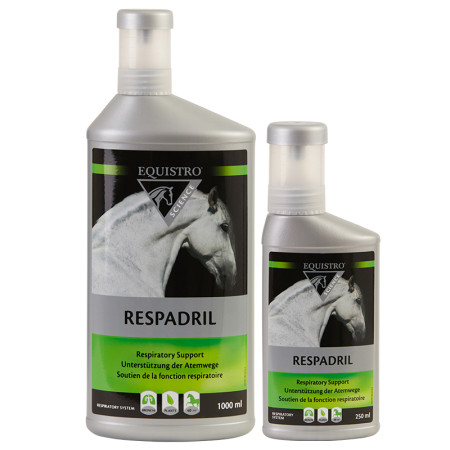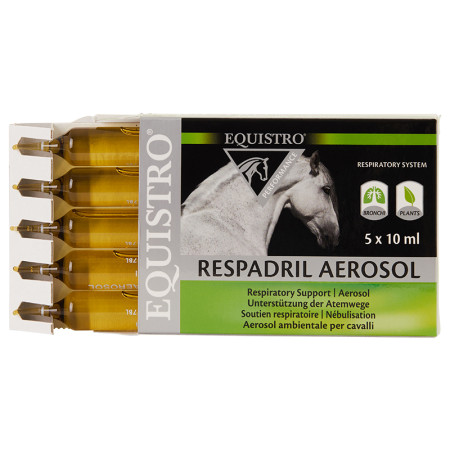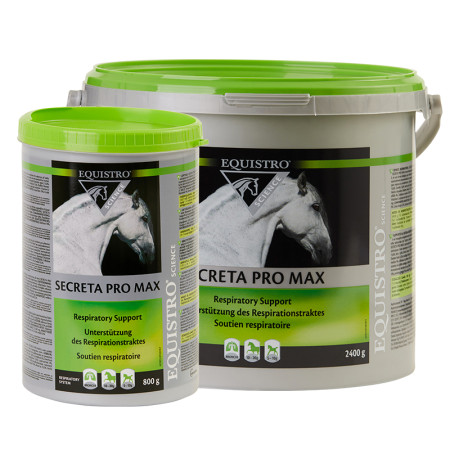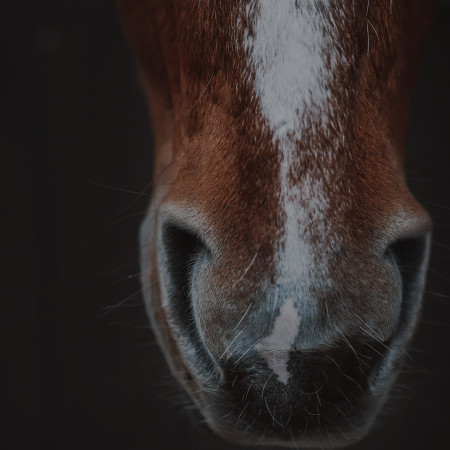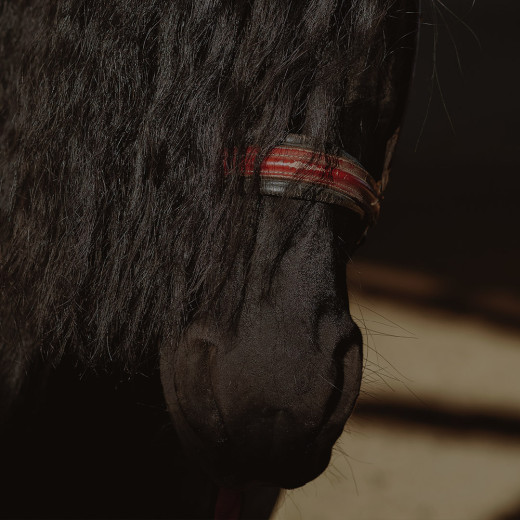
Heaves (Equine asthma)
Causative agents of heaves
Dust particles are of variable size. Respirable particles (less than 5 micrometers in diameter) are able to be inhaled down to the deepest parts of the lungs, in the bronchioles and alveoli. In an ordinary stable, each millilitre of air contains about 3000 respirable particles. With each inspiration, a horse thus inspires 12 million respirable particles.
Pathology of heaves
Small dust particles trigger a protective response of the lungs. In some horses, this reaction is exacerbated and induces an increased production of mucus, a thickening of the mucosa (the thin cell layer that covers the inside of the airways and the lungs) and a broncho constriction (reflex contraction of the smooth muscles around the airways that reduces the air passage diameter). In this case, clinical signs appear: first, poor performance, slightly harsh breathing, or a little cough at the beginning of work can be the only visible signs. In more serious and chronic cases, the horse can have respiratory difficulties even when at rest: this is heaves.
Disease classification associated with heaves
We classically distinguish 2 diseases:
- IAD (Inflammatory Airway Disease) in young and middle-aged horses
- RAO (Recurrent Airway Obstruction) in older horses
In rare cases, the symptoms are more severe during summer when the horse is outside in a field. We thus talk about Summer Pasture associated RAO (SP-RAO). Field mould spores and pollens appear as probable trigger factors in this form of the disease.
When a horse has IAD, it presents no signs at rest. The most frequently described symptoms are poor performance, exercise intolerance, cough at the beginning of work, shortness of breath at work. On the contrary when a horse has RAO, signs are clearly visible at rest: the horse displays respiratory distress, flared nostrils, his respiratory efforts are increased and he often presents a deep and hacking cough. A nasal discharge can sometimes also be observed.
Diagnostic procedure
For these two diseases, the first step of the diagnosis is to exclude other respiratory problems (viral or bacterial infections for example). The history, a thorough clinical examination and possibly blood test provide enough information for this in most cases. To confirm the diagnosis, the veterinarian then needs to perform a sample deep in the lungs: the bronchoalveolar lavage. For this, he introduces a long and smooth tube into the horse’s trachea to the lungs and then instils sterile physiological serum and sucks it back up for laboratory tests.
Treatment opportunities
Medical treatment for these two diseases (IAD and RAO), aims at decreasing inflammation and broncho constriction. We thus use steroidal anti-inflammatory drugs (corticosteroids) and bronchodilators. Mucus-thinning drugs and expectorants can also be added to the treatment. These products can be administered by injectable or oral routes or by inhalation. The latter makes it possible to deliver the product directly to the airways. It requires smaller doses of drugs and reduces the body exposure to the drug (no or fewer side-effects). A horse-adapted nebuliser is needed. Some other products mostly based on essential oils can be used as a complement to the classical treatment, to potentiate it and/or to reduce the risk of relapse.
Long-term management of horses with heaves
These two diseases are closely linked to the environment. Thus, their management must imperatively include measures to reduce dust in the breathing environment of the horse. Otherwise, symptoms are bound to reappear as soon as the medical treatment is finished. To reduce dust in the environment, simple measures are recommended: replace straw bedding by dust-free wood shavings, eliminate dry hay and replace it by sterilised hay or good quality haylage, increase ventilation in the stall and the stable in general, take the stocks of hay and straw out of the stable and put them in a clean and dry place, protected from the rain, take the horse out in a field or a paddock regularly, etc.
Equine asthma - a new term
Recently, scientific research has revealed that IAD in young and middle-aged horses and RAO in older horses have very similar mechanisms and that the two diseases differ basically in their severity. It also appears that these two diseases have numerous features in common with human asthma. The scientific community has thus decided that the term equine asthma might be the most adapted: mild-to-moderate equine asthma in young horses (IAD) and severe equine asthma in older horses with respiratory difficulties when at rest (RAO).
A genetic predisposition has recently been demonstrated in some horse families for RAO/severe equine asthma. This means that a foal from a RAO mare and /or a ROA sire has more risk of developing the disease than a foal from healthy parents.
Dr. med. vet. Julie Dauvillier

